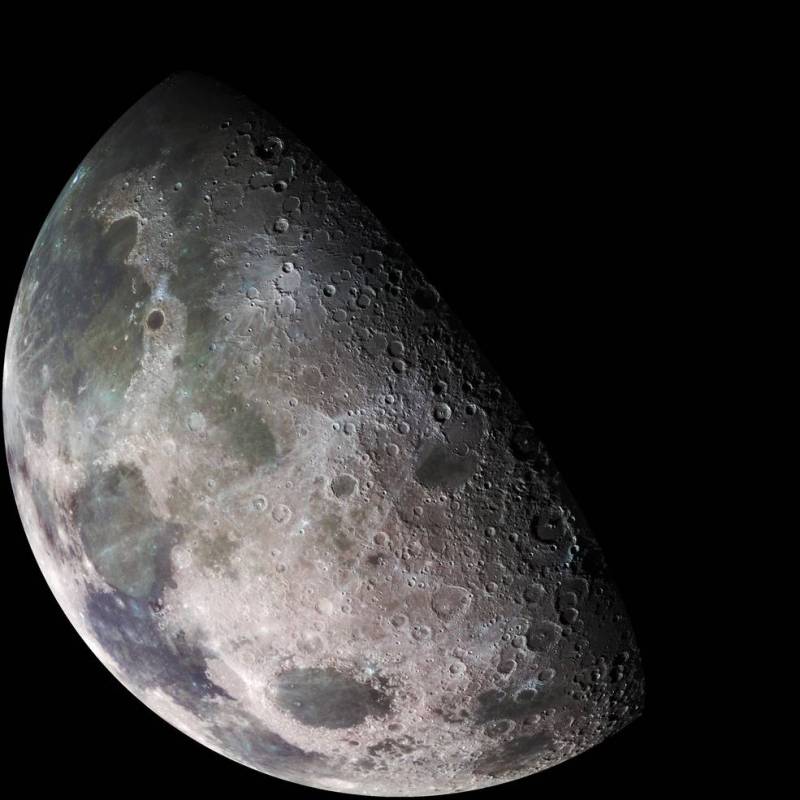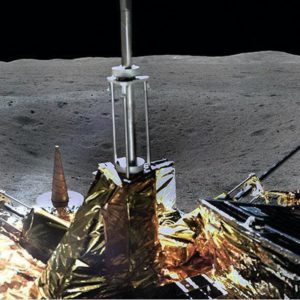“Astronomy compels the soul to look upward and leads us from this world to another.”
The study of stars and the universe is so fascinating. It allows us to investigate the different aspects of cosmos that a simple mind is unable to understand. Since the nature of man is to observe, analyze, interpret, and devise, therefore, from the very beginning, when a man was enchanted by the beauty of shiny stars and moon up above in the sky, he started to develop means to study its fundamentals.
Moon has been the only object rewarded with the most research. The early exploration started from 1959 under the banner of lunar exploration and till date scientists from all over the world work to explore different diameters of Moon. Russia, America, Europe, and China are some of the other countries busy scheduling their scientists to collect more data about the moon. The most recent work is by the Chinese mission holders at 10:30 p.m. on the 3rd of January 2019.
The part of the moon they are exploring is known as the “Dark side of the moon.” This is the first time anything has landed there. Until now, all the astronomers and space crafts visited the light side of the Moon, which faces Earth. By rotation, the Moon revolves around Earth such that only one part of the bright side faces the Earth. It was one of the two reasons that the other side was never studied. Also, the great distance between Earth and the dark side of the Moon hindered exploration. Signal transmission is very limited.
Chinese scientists worked a bit harder and came up with a plan to study the other side too. Chinese scientists managed to set up a relay satellite in the lunar orbit for effective communication at any point on Moon. China faced many struggles due to their various faulty technical and on-ground research, but never gave up. It is due to their consistent planning that they discovered the ‘Dark side of Moon.’
This lunar exploration program, Chang’e-4, was the continuity of their Chang_e missions. Their first mission of the Chang_e program was sent on October 24th, 2007 named Chang’e-1 using a 3A rocket probe. The main highlights of the mission were the high-resolution 3-D images taken from 100 to 200 kilometers above the lunar surface. Another major achievement was the determination of useful resources along with Helium-3 that can run nuclear reactors for 1 day.
A follow-up Chang’e-2 was launched on 1st October 2010. Apart from lunar detailed capturing, the fleet holds some remarkable achievements. As soon as it ended, this mission on the moon the spacecraft probe returned to Earth in August 2011 at L2 Lagrangian point becoming first ever object to directly reach Earth from lunar orbit. From here, it went on an extended mission on 2012 to asteroid 4179 Toutatis. It captured asteroid only from 2 km away of it making China’s 4th ever agency to visit asteroids. The ongoing mission of Chang’e-2 is the deep space tracking and control capability testing for which the spacecraft is flying over 200 km away from Earth and will continue until 2029. On 4th December 2013, Chang’e-3 landed successfully on Moon. The region it landed was a volcanic plane, first to touch down after 40 years now named as “Guanghon Gong.” The spacecraft didn’t survive to function effectively soon after two weeks however, valuable capturing data was sent for two and a half years until it turned into lunar dust in 2016. This incomplete mission failure was due to technical issues that arose soon after the second lunar night.
Chang’e-4, the latest mission, is accompanied with a 3-B long march rocket used by astronomers. It landed on the region known as “Van Karman” at the “South pole Aitken basin” a 110 mile or 186 km area. As soon as the rocket landed the first photographs of this unknown side of Moon was taken and send back to Earth.
The Chinese mission spokesman told that this side of Moon was observed to be calm and quiet. It is because the radio signals can’t reach this side, thus any interference of signals in the atmosphere is absent allowing no noise or hindrance. Keeping this in view a spectrophotometer is attached to probe allowing low-frequency observations. This tends to add great lengths in radio astronomy. Scientists made side by side comparison on the dark and light side as soon as it came into knowledge. Unlike light side flat surfaces, the dark side has mountains and rocky, uneven surfaces. Reasons suggested that any collision or blast resulted from this surface. Scientists are keen to study mineral deposition, the surface composition, and the lunar soil. Neutrons and neutral atoms are known to be a part of the Moon atmosphere. A lunar lander neutrons and dosimeter was attached with spacecraft to study dosage of radiations which will also help in solar wind studies. An advanced analyzer is set up in the spacecraft along with various cameras for studying Sun rays. It is expected that the first proper data on this target will be received to scientists on Earth on the 15th of February.
Scientists are also working on growing vegetable or grain on the Moon for tourist nutrition as it is the primary source of survival. An experiment was done in an aqua system with the living plants such as cotton seeds, yeast and firefly eggs. Their growth and survival in the lunar climate were observed. Earlier, cotton seeds sprung becoming first ever plant to germinate in another planet altogether. This news broke on the 15th of January, only 12 days after the first news of the mission successful landing on the other side. However, later as the night came up and the temperature wasn’t maintained all the plants died. Though the spacecraft was well equipped with batteries to maintain temperature till 200 hours and nutrients for plant survival yet, the greatest fluctuation in temperature at night, an average below 0 degrees till -52 degree Celsius, resulted in the failure of the experiment.
Another major objective of Chang’e-4 mission is to study solar corona. Corona is the plasma that surrounds the solar system, the stars, sun and other. Chang’e-4 mission aims to study the evolution and transport of this ejection from the Sun active region or sunspot and Earth. Cosmic rays the major radiations of the solar system are also to be studied in detail as a part of this missions’ objective.
Scientists are hoping to gather useful data from different setups arranged with the spacecraft for which the Chang’e-4 is routed for. It is expected to be a revolutionary mission in the lunar exploration program after the first rocket and human visit on the moon. Chinese are very keen on pacing up their research in the domain of astronomy. They have already planned Chang’e-5 and Chang’e-6, as their upcoming missions after the completion of Chang’e-4. The upcoming missions will bring back samples from Moon for their detailed in-hand analysis. Chang’e-7 and Chang’e-8 are some other missions targeted to study the Moon terrains and test key technologies respectively.
Chinese believe to come side by side with Russia and America by 2030. It is planning to host its own manned space station by the next year. Other underground work includes the Mars exploration program by the end of 2020. Thus, China is hoping to establish themselves as the leading power in astronomical research and finding. What we hope are the new revelations about the mighty galaxy that fascinate our souls.

Rida Nayyab is a young activist and a Cricket freak. She is a Student of Bio-Chemistry and striving for a better future. Rida is also a freelance writer, social enthusiast, and love to reading, writing and exploring. She is head of the social media team of Scientia magazine.



